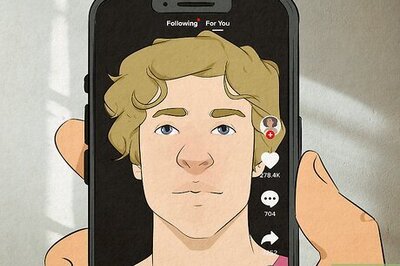
views
Optical illusions can mess with our brains. It can be difficult to figure out what’s going on in the images – even if they look perfectly normal at first glance. And that was the case when it came to a picture of two skyscrapers.
On the Confusing_Perspective forum on Reddit, a user asked, “Which building is closer?” The question may seem simple, but it’s surprisingly tricky to answer.
Which building is closer.. byu/Cloverfieldstarlord inconfusing_perspective
At first glance, you’ll probably be drawn to the lighter building on the right, believing it’s closer. Others think the darker building on the left is closer.
In the comments, one person wrote, “This is one of the best I’ve ever seen. My first impression was ‘right’ but then I quickly realized it was ‘left’ but even after that the buildings alternated in the foreground. I have to look at the right edge of the building, which is smaller than the left edge of the building, to fix the image in my mind.
Another user added, “If you look closely, the left building overlaps with the right one.” Someone else agreed, writing, “Left because of the shadow. The building on the right has a shadow on the right side of the image where the building goes around a corner. The sun is up and on the left, it shines on the side of the building.
In short, they can mess with our vision quite a bit. But learning more about them can give us insight into how people process and interpret information.
Thankfully, there is a way to find out the answer. You just have to zoom in on the image to see where the buildings overlap. The skyscraper on the left goes in front of the right one, which means the left skyscraper is closer to the person holding the camera.
Wondering how optical illusions work? It’s a great place to brush up on your knowledge. An optical illusion is a visually perceived image that is deceptive or misleading, often taking advantage of the way our visual system interprets depth, movement, colour, and pattern.
Optical illusions occur when the information processed by the brain deviates from the physical reality of the stimulus. These illusions can be caused by various factors, such as the arrangement of image elements, the effect of colours, the influence of light sources, or the biological and psychological mechanisms of visual perception.




















Comments
0 comment